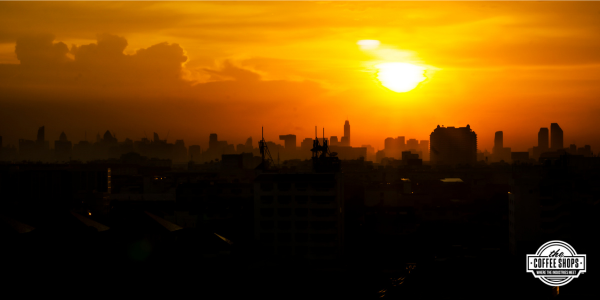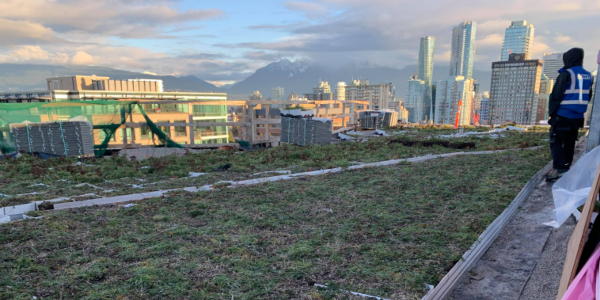Can roofers save the world?

By Howard Wiig, Hawaii State Energy Office.
The answer may surprise you. Energy-efficient roofs play an important role in reaching energy goals.
Roofers can't save the whole world, but roofers working on 150°F roofs know better than anyone that the world is getting hotter, and that we can do our part by installing cool roofs to lower the earth’s temperature and reduce clients’ air conditioning (AC) bills. Lowering AC use also reduces the hot exhaust and mitigates the Urban Heat Island (UHI) index.
Cool roofs are also resource efficient because lighter roofs tend to last longer. They experience less thermal stress and UV damage, and they work everywhere.
Cool roofs everywhere
I was touring a senior citizen residence in St. Paul, Minnesota. When we reached the roof deck I asked the manager, “Shouldn’t this white deck be black to absorb heat up here in the tundra?” The manager explained that this new building was so well sealed and insulated that the cost of winter heating was less than the summer’s air conditioning cost so it made sense to reradiate as much of the sun’s heat as possible. If maximizing solar reflectance in St. Paul pays off, it should pay off anywhere. Cold and cloudy Boston is a prime example — they are one of the hot spots for promoting reflective roofs.
Driven by codes and standards
Many building codes require or incentivize reflective roofs.
- The International Energy Conservation Code (IECC) requires that low-slope roofs in climate zones one, two and three have a three-year aged SRI of 55 and a three-year aged TE of 0.75 or a three-year SRI of 64 in climate zones one, two and three.
- ASHRAE 90.1 has the same requirement.
- ASHRAE’s Standard 100 on Building Performance Standards (BPS) includes a cool roof provision.
- ASHRAE’s 90.2 standard for residences requires an SR of .20 for mass walls.
- California’s Title 24 and City of Los Angeles has an aggressive cool city requirement that includes cool surfaces.
- The Green Globes standard also incentivizes cool roofs.
Perhaps the most powerful driver of cool roofs is the LEED — Leadership in Energy Efficient Design — documentation program which upgrades homes and buildings to high levels of health, comfort and energy efficiency. High reflectance surfaces receive key rewards. Well over 100,000 buildings worldwide are LEED certified.
Many incentives available
In an effort to meet climate and energy goals and to address the growing intensity and frequency of heat waves, cities, including Denver, Colorado; Philadelphia, Pennsylvania and Scottsdale, Arizona, require the installation of cool roofs on new and existing buildings.
Some cities also promote or require cool roofs through voluntary green building. Including Orlando, Florida; Louisville, Kentucky; Los Angeles, California and Austin, Texas offer cool roof rebates, and Boston, Massachusetts; New York, NewYork and San Antonio, Texas deploy programs that install cool roofs on homes and businesses. States requiring cool roofs include Hawaii, Alabama, Florida, Texas, Georgia and California.
The EPA and HUD also provide funding to municipalities through Community Development Block Grant funds and for affordable housing projects funded through the HOME Program for the installation of cool roofs.
Several federal agencies recognize the usefulness of cool roofs in mitigating Urban Heat Island index temperatures, in addition to reducing building energy use. For example, the EPA promotes cool roofs and the U.S. Department of Housing and Urban Development lists cool roofs as an important climate mitigation strategy. The agency also provides funding to municipalities through Community Development Block Grant funds and for affordable housing projects funded through the HOME Program for the installation of cool roofs.
There is an article from Modernize Home Services that lists many additional incentives available.
Steep-sloped roofs
Finally, what about steep roofs? LEED V4 leads the way, requiring steep-sloped roofs (> 2:12) to have a minimum initial Solar Reflectance Index of 39, when determined in accordance with the Solar Reflectance Index method in ASTM E1980. Some roofing manufacturers offer asphalt shingles at no cost premium with Aged Solar Reflective Indexes of over 20.
As summer heat waves become worse, households across the U.S. are running their air conditioners more. Cool exterior walls, or walls that efficiently reflect sunlight (solar reflectance) and emit absorbed heat (thermal emittance), are one easy modification that can help lower energy bills, especially for older homes in warmer climates.
Can roofers save the world?
Yes — one roof at a time.
-2025-xtv-mls-tour-2.png)






















Comments
Leave a Reply
Have an account? Login to leave a comment!
Sign In